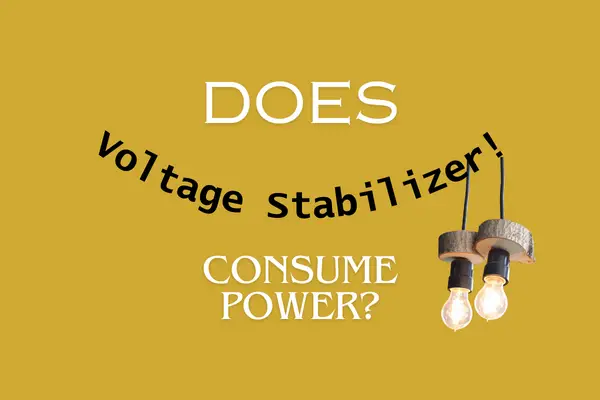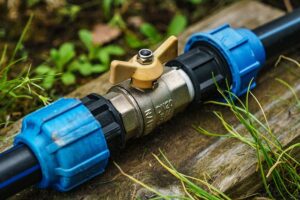Voltage stabilizers play a crucial role in maintaining a stable electrical supply by regulating voltage fluctuations.
Whether in homes, offices, or industrial settings, these devices are often employed to protect electronic equipment from potential damage caused by erratic voltage levels.
However, a common concern among users is whether voltage stabilizers themselves consume electricity. Yes, voltage stabilizers do consume a small amount of power, typically referred to as standby power.
Standby power is the energy required for the stabilizer to remain operational even when there is no load connected. While this power consumption is present, it is generally minimal compared to the overall electricity usage of the connected devices.
Understanding Voltage Stabilizers
Voltage stabilizers are devices designed to ensure a consistent voltage supply to connected electrical appliances or systems.
They serve as a protective barrier against voltage fluctuations that can occur due to various reasons, such as grid instability, electrical surges, or fluctuations in demand.
There are several types of voltage stabilizers, including Automatic Voltage Regulators (AVRs), relay-type stabilizers, and servo voltage stabilizers, each catering to specific needs and applications.
How Voltage Stabilizers Work
Voltage fluctuations are a common issue in electrical systems, and these fluctuations can adversely affect the performance and lifespan of electronic devices.
Voltage stabilizers come into play by regulating the incoming voltage and delivering a steady output to connected equipment.
AVRs use electronic circuits to automatically adjust voltage levels, while relay-type stabilizers and servo voltage stabilizers rely on mechanical components such as relays and servo motors, respectively, to stabilize the voltage.
The Mechanism Behind Voltage Stabilizers
Voltage correction technology is a critical aspect of stabilizer functionality. Buck and boost transformers are commonly used to either decrease or increase the voltage to the desired level.
Additionally, voltage stabilizers employ sophisticated sensing mechanisms to detect voltage variations and trigger the necessary adjustments. This proactive approach ensures a constant and stable supply of electricity to connected devices.
Debunking the Myth: Do Voltage Stabilizers Consume Electricity?
One prevailing myth is that voltage stabilizers themselves consume a significant amount of electricity. In reality, voltage stabilizers do have a minimal power consumption, often referred to as standby power.
Standby power is the energy used by the stabilizer to remain operational when no load is connected. While this standby power is present, it is typically negligible compared to the overall electricity consumption of the connected devices.
Efficiency of Voltage Stabilizers
To gauge the impact on electricity bills, it is crucial to consider the efficiency of the voltage stabilizer. Modern stabilizers are designed with energy-efficient features, adhering to industry standards.
The efficiency is influenced by factors such as load capacity and the quality of components used in the stabilizer. Investing in a high-quality stabilizer with a sufficient load capacity can contribute to overall energy savings.
power losses in the voltage stabilizers
Yes, there are power losses associated with voltage stabilizers. The efficiency of a voltage stabilizer determines how much power is lost during the voltage regulation process.
Most stabilizers are designed to be highly efficient, with modern models aiming to minimize power losses.
However, it’s important to note that no system can be 100% efficient, and some amount of power will be dissipated as heat during the voltage stabilization process.
When selecting a voltage stabilizer, it’s advisable to consider its efficiency rating to ensure that it meets your energy conservation requirements while effectively regulating voltage.
Regular maintenance and proper sizing of the stabilizer to the connected load also play a role in minimizing power losses.
Calculating the Operational Cost
To determine the operational cost of using a voltage stabilizer, users can calculate the power consumption based on the stabilizer’s standby power and the duration of its operation.
While the standby power is minimal, users may find that the benefits of protecting sensitive electronic equipment far outweigh the modest increase in electricity costs associated with the stabilizer.
Considerations for Voltage Stabilizer Users
When selecting a voltage stabilizer, users should consider factors such as matching the stabilizer’s capacity to the connected load and choosing reputable brands known for quality and reliability.
Regular maintenance, including inspection and testing, is essential to ensure the stabilizer operates efficiently.
Timely repairs and component replacements, if necessary, can prolong the lifespan of the stabilizer and maintain its effectiveness.
Conclusion
In conclusion, the idea that voltage stabilizers consume a significant amount of electricity is a misconception.
While these devices do have standby power consumption, it is generally minimal compared to the benefits they provide in terms of protecting valuable electronic equipment.
Users can make informed decisions by selecting the right type and capacity of stabilizer, considering energy efficiency, and performing regular maintenance.
Ultimately, voltage stabilizers play a vital role in ensuring a stable power supply without significantly impacting electricity consumption.


